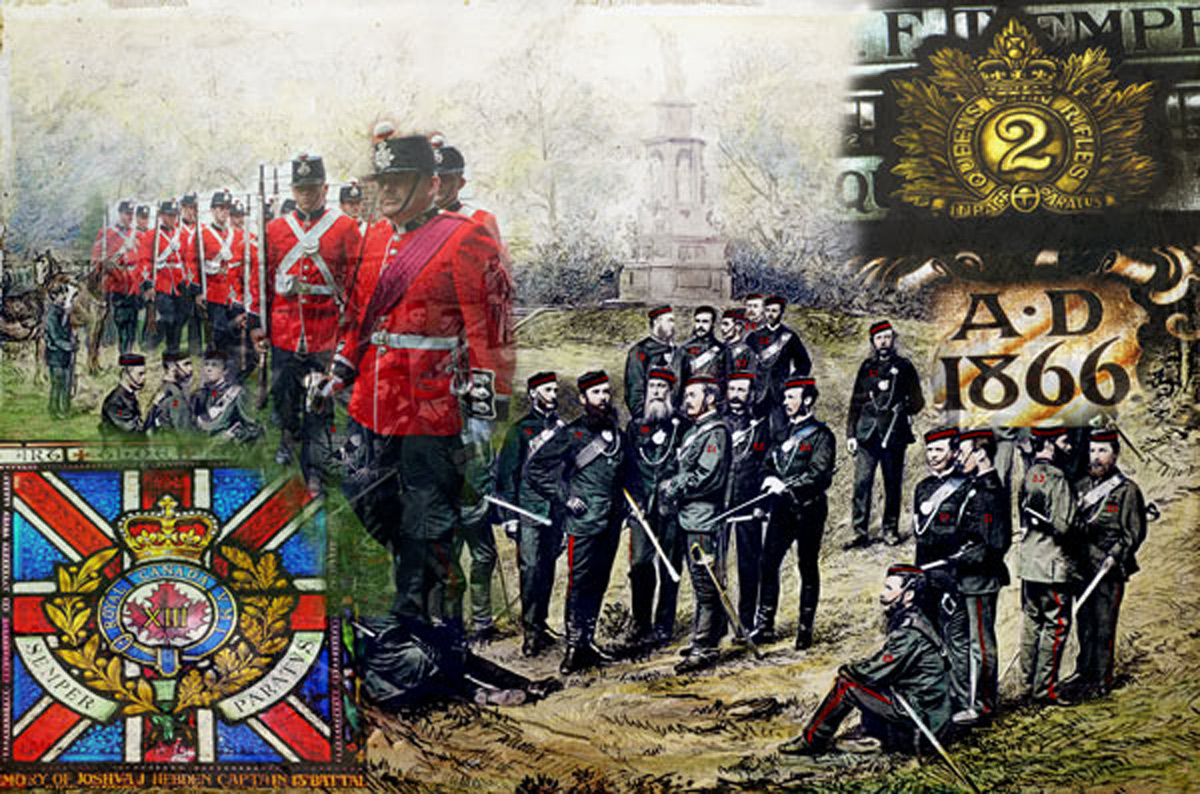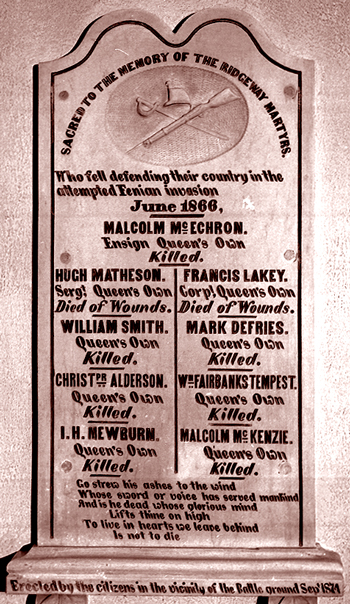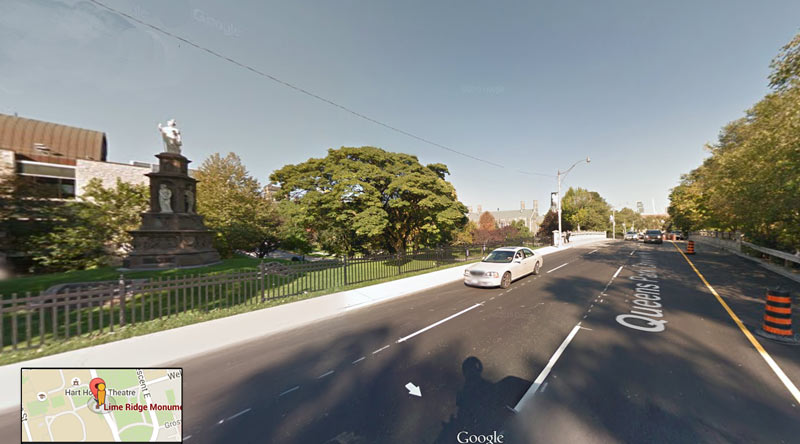| DECORATION DAY: CANADA'S FORGOTTEN FIRST REMEMBRANCE DAY |
 “We
will remember them” is a call heard at many military memorial ceremonies and parades,
but it was only in 1931 that Ottawa passed an act permanently fixing Canada’s
national military memorial day to the anniversary of Armistice Day, Nov. 11,
1918, marking the end of the Great War. The day was named Remembrance Day. The
same act moved Thanksgiving to October from its traditional November date, still
adhered to by our American neighbours. “We
will remember them” is a call heard at many military memorial ceremonies and parades,
but it was only in 1931 that Ottawa passed an act permanently fixing Canada’s
national military memorial day to the anniversary of Armistice Day, Nov. 11,
1918, marking the end of the Great War. The day was named Remembrance Day. The
same act moved Thanksgiving to October from its traditional November date, still
adhered to by our American neighbours.The 1931 Armistice Remembrance Day Act became an inauspicious memorial to those who died in what was called at the time “the war to end all wars.” As the poet W.H. Auden wrote, the 1930s were “a low dishonest decade” in which “clever hopes expired.” The decade ushered in the Second World War, which was infinitely more savage and apocalyptic than the first. It was appropriate to commemorate those killed in that futile First World War with symbolic artificial paper poppies under tombstone-cold grey skies of November. But for 30 years before, Canadians had a different memorial called Decoration Day in which we commemorated our war dead with the laying of real flowers, not in the hopeless gloom of November but in the warm light and optimism of late spring or in summer, often on the weekend closest to June 2, the anniversary of Canada's forgotten first modern battle, the Battle of Ridgeway in 1866. On Decoration Day, Canadians gathered at war monuments, tended to soldiers’ graves after the ravages of winter and “decorated” them with flowers, wreaths and garlands, prayed that their sacrifices were not in vain and that we had come to be worthy of them. Veterans were showered in flowers as they passed, escorted by phalanxes of children. It was a popular communion of young and old with the souls of our fallen soldiers in a celebration of hope, life and rebirth. We remembered and we remembered well. Sadly, politics trumped memory. Decoration Day began as a protest in 1890 by forgotten veterans who had fought in the Battle of Ridgeway but received no acknowledgement from the Canadian government. Nine soldiers were killed in the battle, including three University of Toronto student volunteer riflemen plucked from their final exams the day before and thrown into combat against Irish-American Fenian insurgents who had invaded Canada across the Niagara River near Fort Erie. The Ridgeway Nine are the modern Canadian military’s first nine combat casualties, but the boys killed that day were quickly forgotten by the bungling politicians in Ottawa who had sent them to their deaths, as were another 22 soldiers who later died from wounds and disease contracted on service during the Fenian Raids that summer in 1866.  By 1890, frustrated with being forgotten for nearly 25 years, the surviving middle-aged veterans protested on the June 2 anniversary of Ridgeway by laying flowers and wreaths at the Canadian Volunteers Monument near Queen’s Park, Toronto’s oldest standing public monument. The event became Decoration Day, an annual tradition that endured until 1930 and is still commemorated today in some communities in the Niagara-Welland-Fort Erie region where the 1866 battle was fought. Decoration Day eventually included Canadian soldiers killed in the Northwest Rebellion of 1885, and the South African War (Boer War) of 1899-1902, and the even the Great War, whose casualties were commemorated in June before there was any armistice in November of 1918. When Remembrance Day was established in 1931, with only a few surviving Fenian Raid veterans remaining to remind Ottawa of its historical bungling, the embarrassing memory of our first fallen soldiers was purged from our national heritage and from the Remembrance Day commemoration. Today, they’re not even listed in our National Books of Remembrance, and few in Canada have even heard of the Battle of Ridgeway. Until recently, Canada’s Veterans Affairs website used to state that Remembrance Day only “commemorates Canadians who died in service to Canada from the South African War to current missions.” Now, some Veterans Affairs web pages have begun to purge the South African War casualties, proclaiming that, on Remembrance Day, “we honour those who fought for Canada in the First World War (1914-1918), the Second World War (1939-1945), and the Korean War (1950-1953), as well as those who have served since then.” This is a further erosion of our historical memory of sacrifices that should never be forgotten no matter how long ago they might have been made. With the recent death of the last surviving veteran of the First World War, tomorrow may see the memory of those sacrifices thoughtlessly deleted from our national heritage. And the day after tomorrow, our Second World War and Korean War fallen may be as easily forgotten, and it will be left to us to explain to our children what Nov. 11 used to signify and why we fought those wars. Remembrance must be forever. Veterans Affairs needs to permanently restore the memory of all our forgotten soldiers who fell in service for Canada, not just the more recent ones but beginning with our very first who we used to commemorate during Decoration Day, starting with the Ridgeway Nine. Let’s all take one more day to remember, that warm sunny one in June. Let’s revive Decoration Day and place a living flower on a soldier’s grave, tend to it tenderly, embrace a veteran and thank them for those better summers of our liberty and prosperity that define this great nation we call Canada. One more day is surely not asking too much to acknowledge entire lives given. Let’s remain true to our promise, “We will remember them.” Peter Vronsky, Globe & Mail Online, November 10, 2012 Photos of University College Queen's Own Rifle Memorial Window and Ridgeway Nine Plaque by Rick Doan BACK TO THE HIDDEN HISTORY OF CANADA DECORATION DAY |
